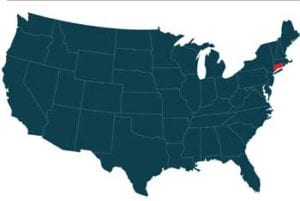Connecticut Emergency Vehicle Light State Statutes
Emergency vehicles use different colored lights to indicate their ends. It’s important to have warning lights for every vehicle so people understand why the vehicles are on the road. Every State has slightly different laws regulated by state statutes for emergency lights. Under Connecticut the state statute 14-1(5) identifies an emergency vehicle. Any emergency vehicle is known to be an ambulance, police car, public service vehicle, or fire engine. Additionally, any vehicle expressly designated by federal, state, or local governments to be an emergency vehicle is protected by this law.
Red Lights
Police vehicles have to use red lights as a warning. The color of different lights for motor vehicles is outlined in state law 14-96p. Even when en route to an accident is a police vehicle supposed to flash certain warning lights. Police cars are not supposed to have white or blue strobe lights in the State.
Firetruck Lights
According to state statute 14-96p(4), fire trucks must use white flashing lights or white strobe lights rotating to announce their presence. While en route to an emergency, firetrucks may also use flashing red emergency lights. The white lights are used to alert people of their presence on both an emergency route and in the emergency scene.
Volunteer Firefighter Lights
Statute 14-96p(3) allows for the use of white flashing headlights when a vehicle is operated by a volunteer firefighter and that vehicle is en route to an emergency. However, in order to use these, the person driving the vehicle must have received prior authorisation from their official chief law enforcement officer to use such lamps. Authorisation must be given in writing and stored inside the vehicle.
State statute 14-96p(4)(b) explains that permitted volunteer firefighters may also use blue lights on top of their vehicle. While the firefighter is en route to an emergency scene, these blue lights could flash. In January the fire department’s chief executive will provide certifications for the use of blue lights.
Ambulance Lights
It also governs ambulance lights by the same statute that governs police lights. Ambulances must have bright red lights which flash. Those warning lights must be displayed when the ambulance is on an emergency route. Ambulances must also comply with federal regulations regarding their warning lights and their manufacturing.
If a person is involved in an association type of voluntary ambulance and is on the way to an emergency, they may use a flashing green light to indicate their status on their vehicle. This is mentioned in Statute 14-96p(4)(c). They must have had written permission from their chief executive officer to do so. The Officer may revoke the written authorization.
Tow Truck Light
State Statute 14-96q(c)(4)(a) refers to tow trucks and other wrecker vehicles using the warning lights. Tow trucks are not covered under Connecticut’s definition of emergency vehicles. That said, in compliance with state laws they may use certain warning lights.
The use of yellow and amber warning lights is allowed in all service vehicles used for towing and wrecking purposes.
Construction Vehicle Lights
Vehicles at construction sites must comply with Connecticut Department of Transportation’s warning light laws. They may use bright floodlights at construction sites, but they must not target the road with bright floodlights. In addition, headlamps for the construction vehicles must not be directed to the road unless they comply with the height regulations for headlamps on motor vehicles.
Utility Vehicle Lights
When a person fills out Connecticut DMV’s Flashing Light Permit, they can use flashing warning lights on their utility vehicles. Unlike many other states that do not include utility vehicles in their State definition, utility vehicles are considered emergency vehicles under state law.
Flashing light allows in the state to expire annually, and must be renewed. The DMV’s Flashing Light Unit processes all applications by mail.
Pilot Vehicle Lights
The Connecticut Transportation Department allows for the use of amber lights by pilot vehicles, provided they have completed an application. Out-of-state pilot vehicles do not need to fill out a warning lights application, provided they have permission to use warning lights at their own registration status.
The warning lights have to be mounted on top of the vehicle, and seen on a clear day at a distance of up to 1,000 feet.
Emergency Vehicle Lights
Police vehicles are not considered part of Connecticut’s emergency vehicle listing. They must abide by normal regulations concerning the use of headlights on motor vehicles.
For more information on what lights are available to you, we suggest calling your State Highway Patrol office at: 860-534-1000 *Please note that these numbers are what we can find at the moment, and the numbers may have changed since this listing.


